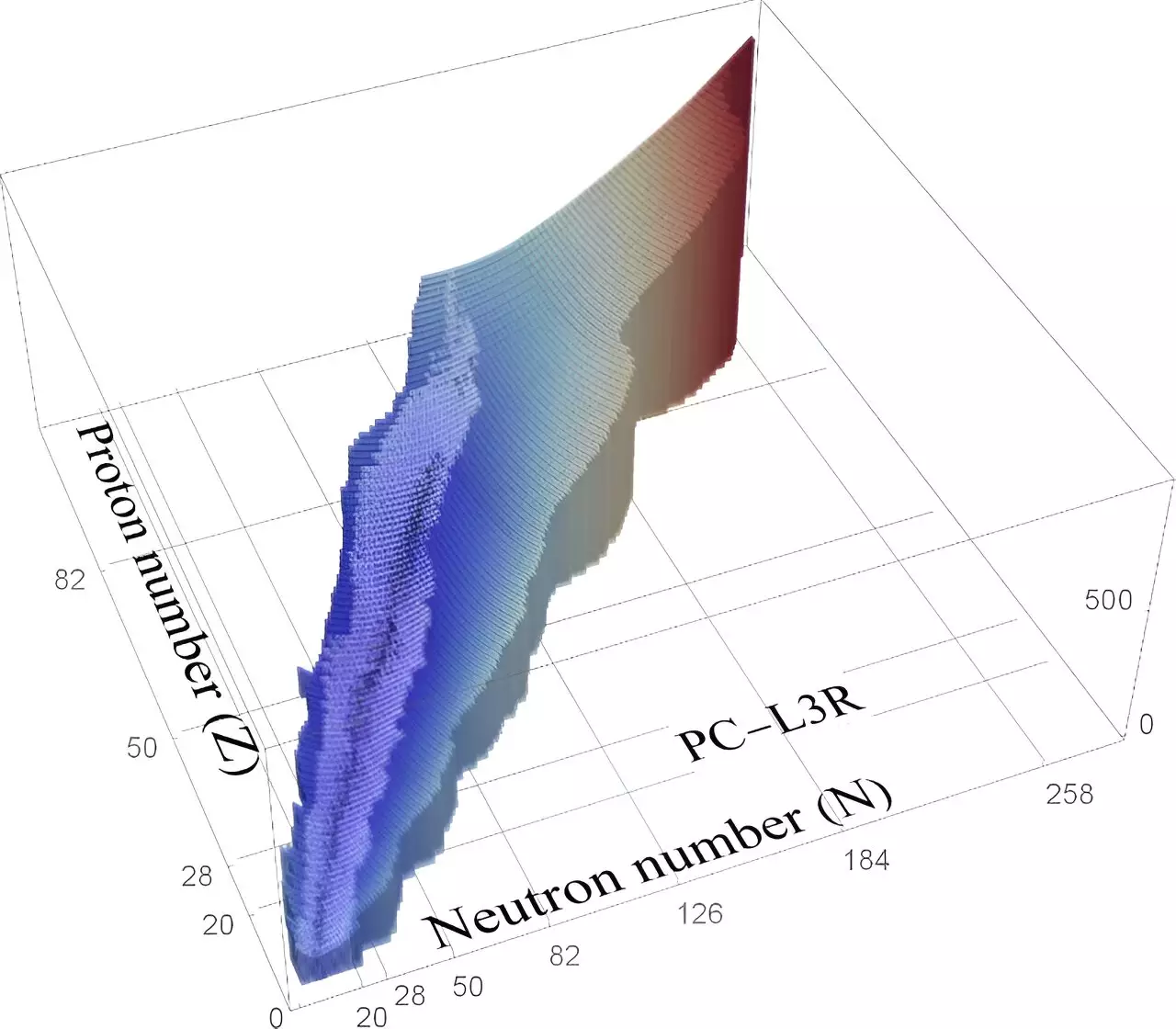With the development of new generation radioactive-ion beam facilities, the potential for conducting previously challenging experiments has significantly increased. These facilities allow researchers to discover new isotopes and uncover physics related to exotic nuclei, which are located far from the beta-stability valley. These experiments play a crucial role in deepening our understanding of the origins of chemical elements in the universe. This article will explore the advancements brought about by these facilities and the importance of theoretical predictions in nuclear physics research.
Researchers from the Institute of Modern Physics (IMP) of the Chinese Academy of Sciences (CAS), in collaboration with Technische Universität München, have utilized the covariant density functional theory to predict the existence of exotic nuclei. This theory has proven to be one of the most successful approaches for studying nuclear structure and is widely used in the field.
The covariant density functional theory describes the interactions among nucleons within the nuclear medium. These interactions can be modeled either as point-coupling interaction, where nucleons are treated as point-like particles, or as meson-exchange interaction, where nucleons are considered as constituents communicating through the exchange of mesons.
In their study, researchers applied the relativistic Hartree-Bogoliubov approach, combined with one of these interactions, to systematically explore the ground state properties of isotopic chains ranging from oxygen to darmstadtium. The properties examined included binding energies, separation energies, radii of matter, neutron, proton, and charge distribution, Fermi surfaces, and ground-state spins and parities.
Exotic nuclei, which potentially exhibit new phenomena, provide a testing ground for our understanding of quantum many-body systems. While approximately 2,500 nuclides have been experimentally proven to exist, researchers anticipate that new facilities will enable the discovery of even more exotic nuclei and the unraveling of phenomena never before seen.
Matching theoretical predictions with experimental findings is an exciting prospect, as it allows for the cross-checking of theoretical models. This convergence between theory and experiment not only advances our understanding of nuclear physics but also highlights the possibilities for future discoveries in the field.
Measuring the last bound nuclei of isotopic chains not only tests nuclear theory but also enhances our comprehension of nucleosyntheses in extreme astrophysical environments. Neutron star mergers, core-collapsed supernovae, and X-ray bursts provide the backdrop for these nucleosyntheses, and understanding their extent is crucial in uncovering the origins of chemical elements in the universe.
The determination of nuclear masses, radii, and half-lives of newly discovered isotopes and the limit of isotopic chains is essential to confirm their existence. Reliable theoretical predictions serve as invaluable guidelines for the experimental investigation of new isotopes. These predictions provide insights into the characteristics and physics properties of these isotopes, further advancing our knowledge of nuclear physics.
Potential Applications and Future Research
Based on the ground-state properties of nuclei, extensive discussions have been conducted regarding the drip line of neutron and proton, the halo phenomenon, and the new magic number problem. These discussions pave the way for future experiments and theoretical research in nuclear physics. The predicted properties can guide researchers in designing experiments and developing theoretical models that accurately capture the behavior of exotic nuclei.
The advancements brought about by new generation radioactive-ion beam facilities have opened doors to previously challenging experiments in nuclear physics. The use of covariant density functional theory and the accurate prediction of ground-state properties play a pivotal role in understanding exotic nuclei and unveiling new phenomena. The convergence of theoretical predictions and experimental findings drives the progress of nuclear physics research and leads to exciting discoveries that deepen our understanding of the universe’s chemical elements.


Leave a Reply